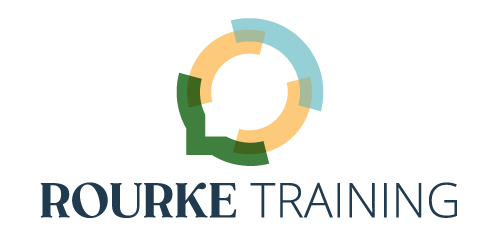Often, speakers and trainers have a habit of presenting new information to an audience in a linear way, moving steadily through the material from beginning to end. The sequence is pre-determined and scaffolding helps the speaker build upon previous points. This technique has the advantage of being very straightforward; all connections are clear and logical. The speech or presentation proceeds predictably and likely will meet all of the speaker’s and/or event’s objectives. Reliable performance and content is important for public speaking and training.
However, if you can only give your speech or presentation in sequence from front to back, then your material always needs ideal conditions in order for your audience to absorb it. If you can ensure that you have a perfect event with 100% consistency, I’m envious. Curious, too – what did the genie grant to you for your other 2 wishes? Tell us in the comments!
The linear approach to preparing for public speaking often breaks down when planning in the abstract meets reality in the flesh. Maybe you find out on the day of the speech or training session that your audience is intermediate-level, not beginner, or you’re told about a technical reason why you need to cover certain topics earlier than you’d planned. Maybe you find out upon arrival on the day of the event, maybe you find out a day or two beforehand. Whatever the reason and whenever the timing, sometimes you need to reorganize your material on the fly.
When you organize your material into a series of discrete outlines, you can practice delivering the same core content in a variety of ways. You’ll know the material backwards and forwards, inside out, upside down, and in no particular order at all. Not only will this help you to learn the material more thoroughly, but you’ll be ready to adapt to whatever happens in the moment. With that much preparation, you’ll have the confidence to handle anything.
A Needs-Based Approach Increases Your Adaptability
Organizing your material according to multiple outlines lets you put your audience’s needs first. Of course, meeting your audience where they are is a bedrock principle of effective public speaking and presenting. A linear approach is a good match with some audiences, but the worst possible organization for others. Focusing on your audience’s needs builds flexibility into your public speaking by opening space for you to survey attendees at the beginning of the session. You can then use their responses to build the best presentation sequence for that specific group.
Let’s be honest, though.
A needs-based approach is time intensive. If you’re always presenting your content in the same front to back way, you have less work to do with subsequent speeches and presentations. Clearly, organizing and practicing your content in multiple schemas takes significant additional prep time. You need to identify the various possibilities for organizing your material. Each of those schemas has to have specific transitions to knit the pieces into a cohesive narrative. Each schema also calls for dedicated practice so you don’t leave out a section or forget which one comes next. The end result, however, is higher engagement and retention because you are meeting the audience’s needs.
Use Categories and Themes for a Broad-Based Approach
Categories and themes help your audience anchor your information within the bigger picture. They are the patterns that recur throughout your material, as seen from a bird’s eye view. Categories and themes cut across institutional silos; they often provide an entirely different structure to familiar material. They can also spark creativity, leading your audience to reframe difficult problems in novel ways.
Categories and themes can be particularly effective with large audiences or audiences from mixed experience levels because they provide a common base of understanding. From that common base, a wide range of audience members’ needs can all be addressed at the event.
Amplify Details with Content Analysis
If your audience consists primarily of big-picture people, of folks who operate in long time spans and overviews, content analysis provides a nitty-gritty perspective of your material. Whereas categories and themes are macro level, content analysis is micro. Content analysis highlights the details that serve as building blocks for themes.
Here’s an example. Let’s say the material shows a large number of expressions about bees: busy as a bee, a bee in your bonnet, queen bee, the bee’s knees, mind your own beeswax. The speaker or trainer needs to showcase these sayings while also integrating them into the body of the speech or presentation.
Content analysis would bring specific attention to each saying, rather than letting the audience gloss over them as familiar, and perhaps even empty, clichés. Content analysis would also make it possible to bring fresh energy and emphasis to each metaphor, wherever it occurs in your material.
On the other hand, using a category or theme structure would show the overall pattern of bee metaphors in the material to the audience so they can understand how the phrases function. Are they specifically evoking a rural or agricultural context? A folksy or informal voice? Does the pattern reinforce something specific in the material or is it related to the company brand?
Content analysis and categories/themes support each other. On their own, each can be a powerful way to engage your audience’s attention and see your material differently.
Start with Pain Points to Bring Instant Relief
Depending on the size of your audience, their general experience level, and the amount of time you have, consider starting by asking your audience for their pain points and addressing those early in the training or presentation. What are they most curious about? What do they need to know for their daily work? What frustrates them the most? Which problems recur most often or are the trickiest to solve? Building your speech or presentation around pain points involves the audience’s needs more deeply in the material.
For this technique, you’ll need a way to display suggestions as the audience suggests them. That might be a blank document projected through AV tech or it might be a large easel pad of paper and markers. Anything that you can work with live during your speech or presentation is fine. If a single pain point comes up multiple times, put a tick mark beside it each time. This will help you chunk related items together. The display of suggestions also creates a visual record of the conversation, helping your audience to focus on what you’re saying rather than trying to remember their specific question until the designated Q&A time.
How About You?
Do you prepare your material in different ways? How do you decide which schema to use with which audience? Or, do you have a go-to way to organize a speech or presentation? Have you ever had to reorganize a speech or presentation at the last minute? If so, why? Because of incomplete communication in the weeks leading up to the event? Because of tech issues? Because the audience is not who you expected to attend? How did you adapt in the moment? Had you received training or were you winging it all the way? What was the outcome?
Tell us about it in the comments.
Check Out Our YouTube Channel
The Rourke Training – Ongoing Mastery YouTube channel has a bit of something for everyone. Go there to get Kirsten’s take on examples of public speaking, as well as reflections on her entrepreneurial journey. The channel is also the home of the podcast Kirsten and Kellie produced for 5 years, Ongoing Mastery: Presenting & Speaking, which covers everything connected to continually improving your craft of being a public speaker, from interviews and mini-coaching sessions with guests to conversations between Kirsten and Kellie.
Come join us. Cheers, Kellie


